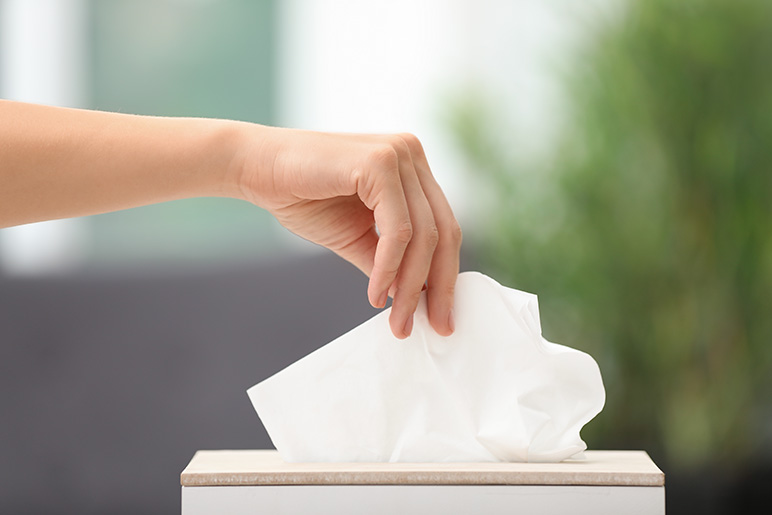
As the seasons shift from summer to autumn, many Hoosiers brace for itchy eyes, sneezing bouts and other symptoms associated with fall seasonal allergies. In Indiana’s fall air, ragweed pollen, mold spores and excess moisture can create a pretty potent mix for allergy sufferers. By following these tips and strategies to manage fall allergies in Indiana, you can reduce symptoms and truly enjoy this cool, colorful season.
What triggers fall allergies in Indiana?
Ragweed pollen is the arch-nemesis of many fall allergy sufferers. Ragweed starts pollinating in late summer and can continue until the first frost. The pollen is extremely lightweight and can travel hundreds of miles. Warm, windy days typically result in high pollen counts, and midday is typically when conditions are worst. Since ragweed is so light and fine, it can even impact people indoors.
Mold is another pesky participant in the fall seasonal allergy game. According to Reid Health, located in Richmond, leaves that dry out and die in the fall release mold into the air. As rain and moisture increase, so does the growth of mold. If that wet period is followed by a dry spell, that’s when the spores are released into the air.
Finally, your own indoor environment may cause you grief in the cooler months. You might unknowingly trap allergens inside your home! As you start to leave your windows closed and kick on the heat, the heating, ventilation and air conditioning (HVAC) system can spread dust, pet dander and pollen throughout the house, resulting in increased allergy symptoms.
Tips to reduce exposure to allergens and alleviate symptoms
Monitor pollen and mold forecasts
Check your local pollen forecast each day. When ragweed or mold spore levels are high, try to stay indoors when allergens are worst, usually midday. The Weather Channel and Kleenex both provide online pollen forecast tools.
Insist on indoor allergen prevention
The Asthma and Allergy Foundation of America website is full of great tips to control indoor allergens. One easy way to reduce allergens is to keep areas that are sources for allergens like carpeting, soft furniture, bedding and indoor plants clean. You can also protect your indoor space by keeping windows and doors closed on high pollen days, using air filters and running a dehumidifier to reduce the potential for mold.
Clean up after being outdoors
Pollen can hitch a ride on your clothes, shoes, hair and skin. If you’ve been working outside or just enjoying the fall weather, take some precautions when you come back inside. Remove your outer layers and wash your hands. If your allergies are severe, Eskenazi Health recommends showering frequently to remove pollen from skin and hair.
Know your triggers and plan accordingly
Once you know what allergens give you the most grief, you can start to put preventative measures in place. If the pollen forecast is showing a high-pollen day, pack your medicine or take it preemptively. Reid Health also suggests stocking up on supplies before you might need them. So, pick up air filters or a vacuum cleaner with a HEPA filter to help you fight off allergies this fall.
Lutheran Health Network (LHN), based in northeast Indiana, highlights the importance of healthy lifestyle choices and general wellness. It’s much easier to ward off allergy symptoms if your immune system is strong. LHN’s advice includes eating nutrient-rich foods, staying active and staying hydrated. Your body will thank you!
When to go to the doctor for allergies
You don’t have to dread fall allergy season in Indiana. Try incorporating some of these tips into your life to see if you can find some relief this year!
Inside Story is for educational and informational purposes only. Inside Story is compiled from various sources, which may or may not be affiliated with our family of companies, and may include the assistance of artificial intelligence. While we strive to provide accurate and reliable content, we make no warranties or guarantees about its completeness, accuracy, or reliability, and are not responsible for the content of any third-party sources or websites referenced herein. The inclusion of any content does not establish a business relationship or constitute our endorsement, approval, or recommendation of any third party. Testimonials and examples provided are for illustrative purposes only and do not guarantee future or similar results or outcomes, and may not consider individual circumstances, goals, needs, or objectives. Inside Story does not provide legal, tax, or accounting advice. For individual guidance, please consult a qualified professional in the appropriate field.
Coverages subject to policy terms, conditions, and exclusions. Subject to underwriting review and approval.